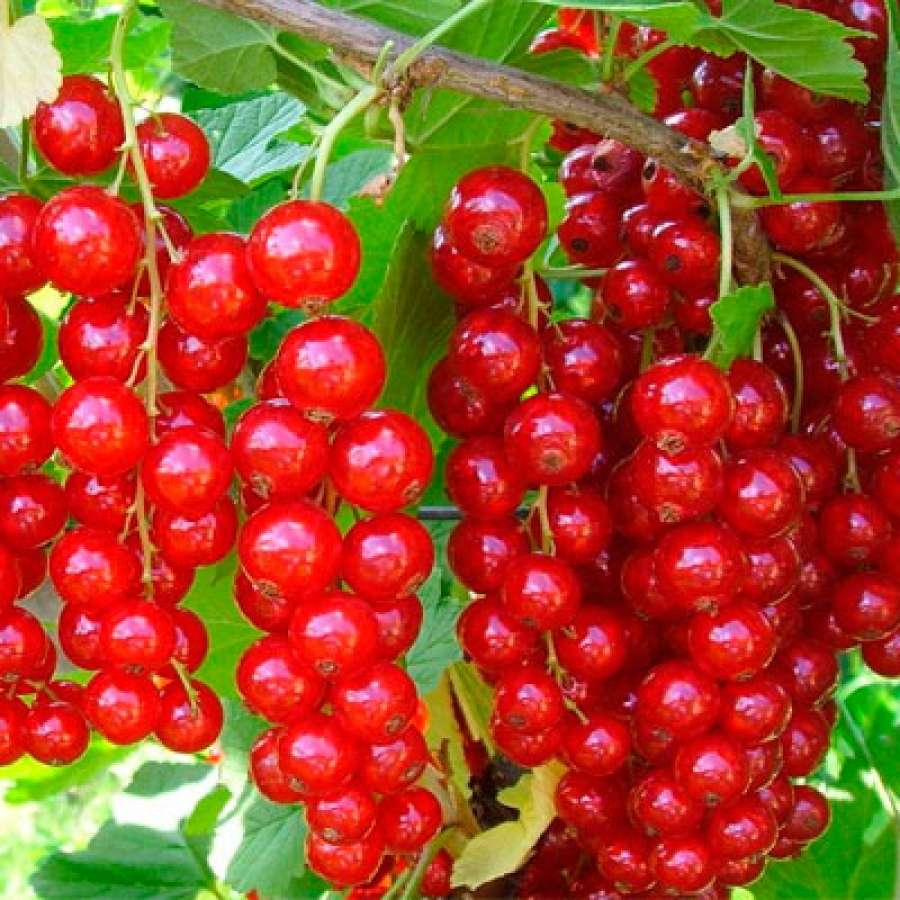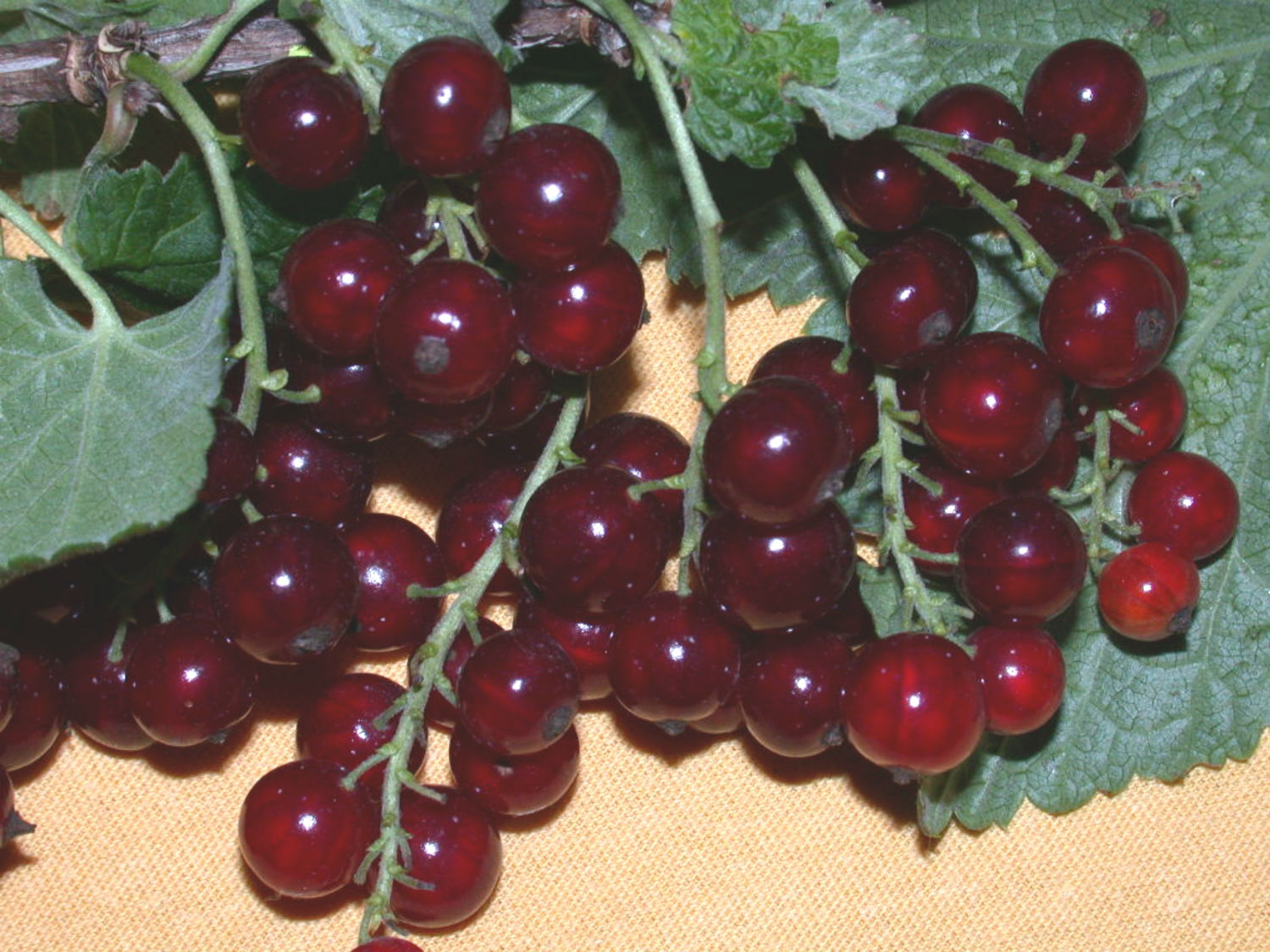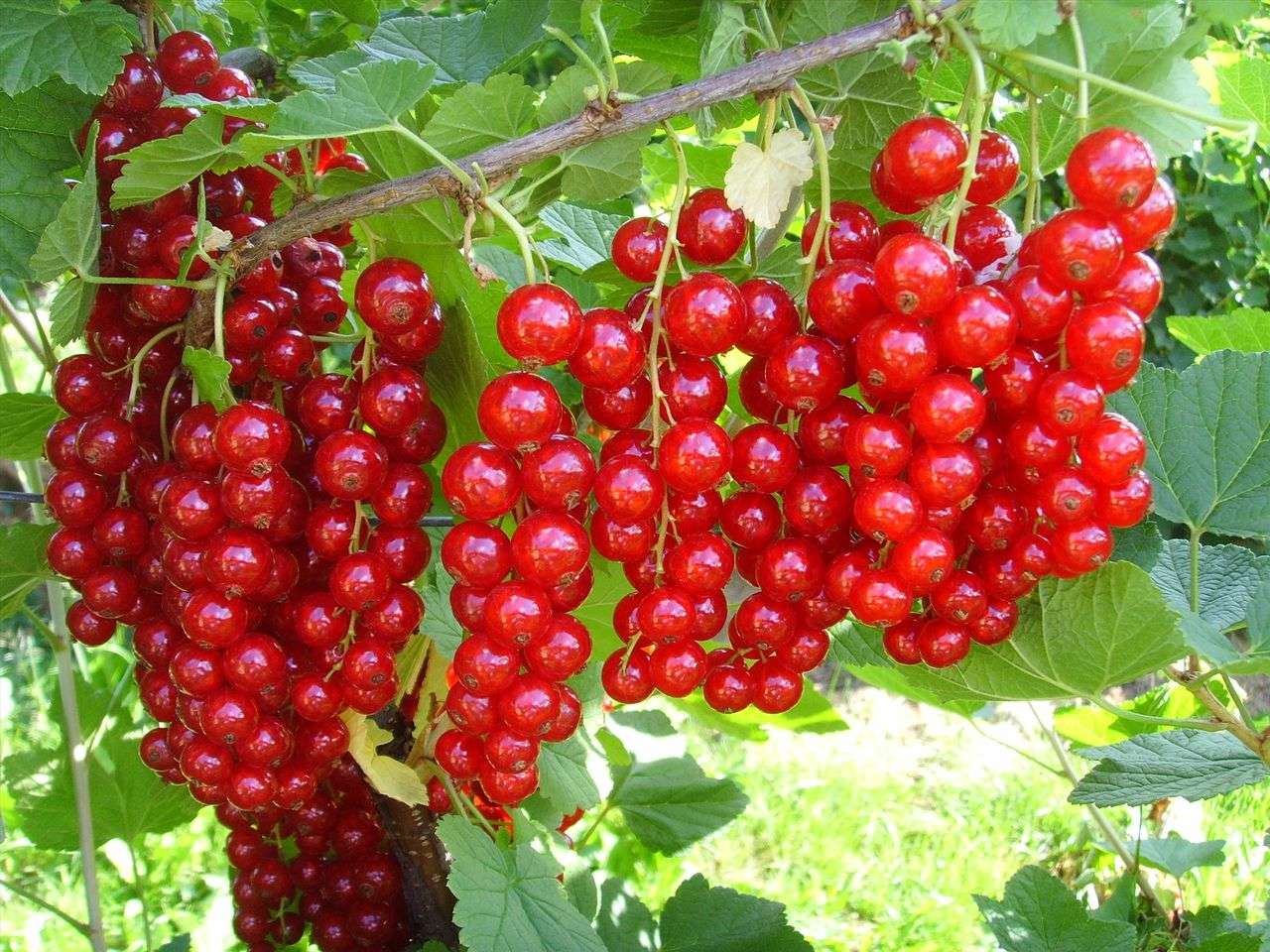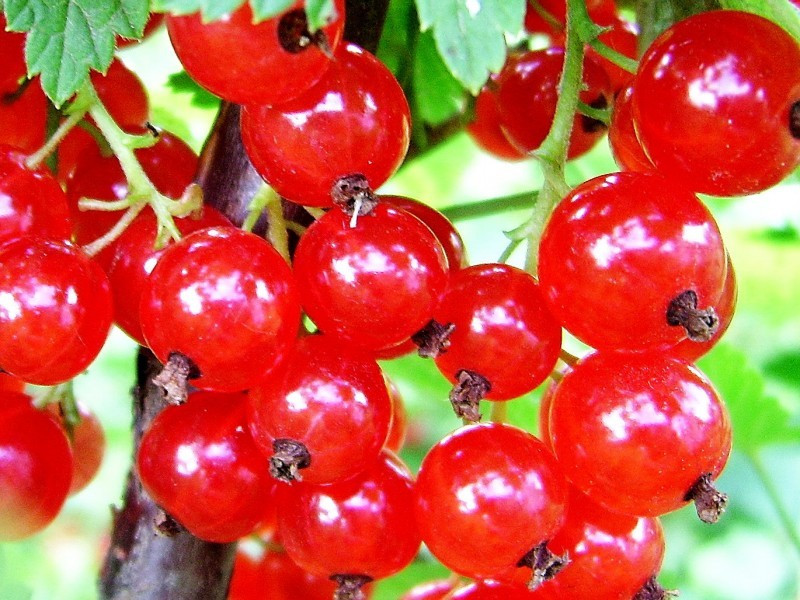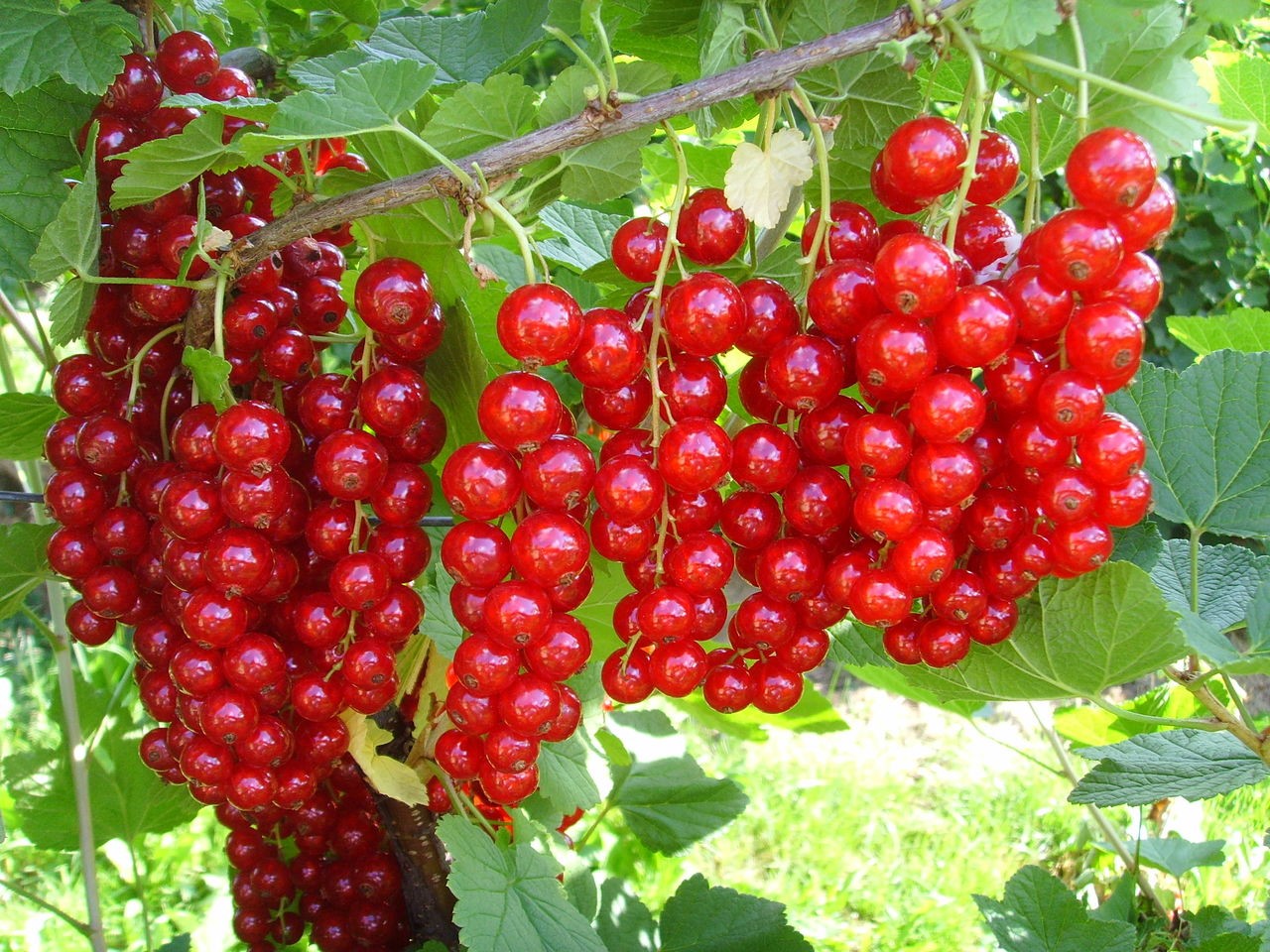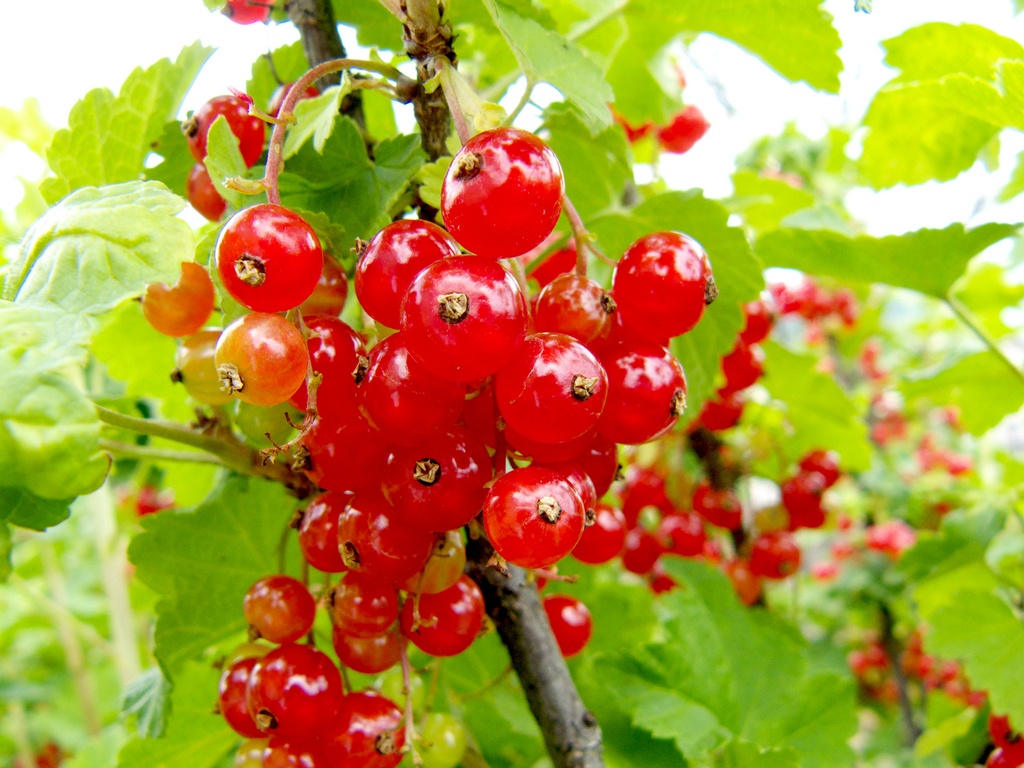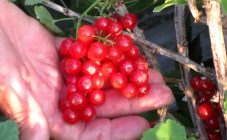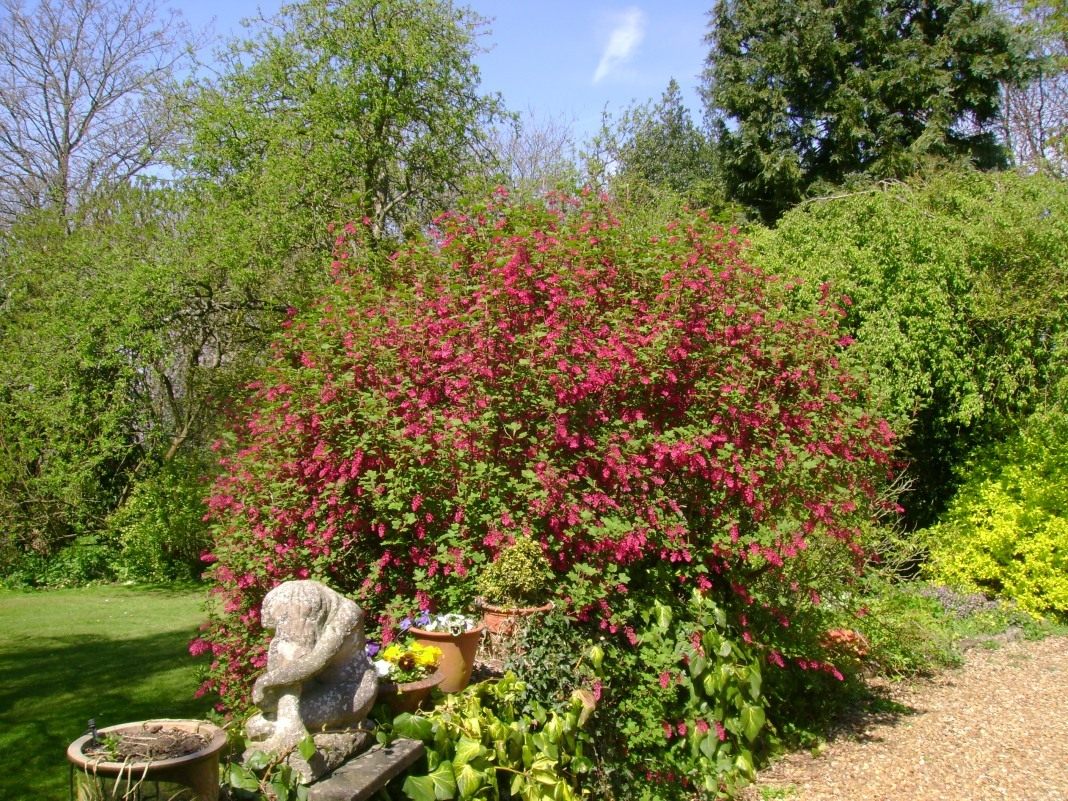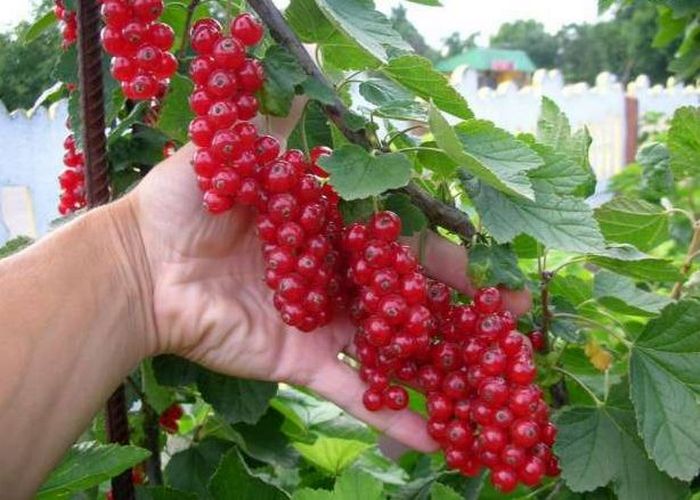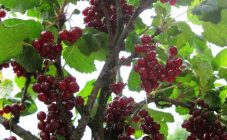Content:
Red currant - a variety of planting culture, widely grown in Russian regions, was first mentioned in medieval historical chronicles.
The list of trace elements includes:
- about 10% sugars;
- about 3.3% organic acids;
- tannins;
- pectin compounds;
- vitamin C;
- vitamin P;
- mineral salts;
- pectin.
Briefly about garden culture
Juice from these berry fruits can instantly quench your thirst. Eating red currants improves appetite. The juice from these fruits can be used as an activator of the intestinal tract and during the cold season. It acts as a purifier, contains more useful microelements, especially vitamin C, in comparison with white currant. It is easy to grow and bears fruit abundantly. Also, this garden culture is considered the main one for the northwestern part of our country. Shrub plantings of red currants are frost-resistant.
List of the most common varieties
- Dutch red is an outdated varietal variety that is not recommended for cultivation, despite its rich yields and the presence of immunity to diseases and insects. Overly acidic small-sized fruits;
- Early sweet - a popular varietal variety, early ripening fruits, sugar. Berries on a tall, spreading shrub, aligned in the form of brushes. The variety gives a bountiful harvest;
- Firstborn - the enlarged sweet and sour fruits of this Finnish variety ripen early. Berries on a compact bush planting are able to ideally remain on the bush until the beginning of autumn, without losing their taste. The variety gives a bountiful harvest - about 11 kilograms per bush. Good resistance to cold and anthracnose lesions;
- Jonker Van Tets is an abundant Dutch variety. A vigorous shrub with a compact size. Due to the fact that the leaf covers the elongated brush, the bright red berries are inaccessible to birds. Quite good resistance to anthracnose lesions;
- Versailles white is a mid-season high-yielding variety with dessert fruits. However, overripe berries lose their gastronomic qualities. Poorly resistant to frost. Sprawling shrub with easily breaking branches;
- Red Cross is a fruitful American variety with dessert light red berries, frost and anthracnose resistant. Flowers on brittle branches of a medium-sized shrub with a dark red hue;
- Fairy is a fertile imported variety with sour, large-sized fruits. On medium-sized spreading shrubs, brittle branches are located. From time to time exposed to anthracnose lesions;
- Generous is a domestic medium-early variety that gives a high yield of sweet and sour berry fruits of a light red shade of medium size.Low, moderately spreading shrub. From time to time it is affected by anthracnose disease;
- Yuterbogskaya is a German variety with light sweet and sour fruits. Berry fruits are kept on a low, spreading bush until frost. The yield is 13 kilograms from a bush planting. Resistant to cold weather;
- Dear - a variety with large-sized red sweet and sour berries. Resistant to frost and fungal infections. Low shrubs;
- Krasnaya Andreichenko is a high-yielding variety with large sweet and sour berries. The semi-sprawling shrub is immune to frost and fungus;
- Rondom is a Dutch varietal currant that gives a bountiful harvest of large red sweet and sour fruits. The presence of resistance to cold and anthracnose lesions. The short shrub is compact in size.
Place for planting bushes
The place for planting red currants should be open and well lit. Shady and partial shade places should be avoided. The ideal type of soil for growing in our lane is slightly acidic loamy with a pH index of about 5, with an abundant application of potassium.
Strongly oxidized soils of dense consistency are contraindicated. Since the roots go far into the depths, the hole must be deep (at least 60 centimeters). The location of ground waters nearby is unacceptable. Before planting the prepared material, organic and mineral dressings should be added. In the future, the shrubs will have to be fed every year. The recommended distance between cluster plantings is 2 meters. A gooseberry bush is ideal as a neighboring shrub, despite being susceptible to the same pests. Do not plant black currants next to shrubs.
The list of crops recommended for placement on the southern side of the cluster planting:
- strawberry plantations;
- vegetables with shallow roots;
- greens;
- bulbous flowers.
Planting red currants
Detailed step-by-step instructions on how to grow red currants:
- Dig a hole, the parameters of the sides of which are 50 centimeters, about a meter deep;
- Lay a pre-prepared mixture of wood chips, chopped branches and raspberry stalks at the bottom;
- Re-layer with soil;
- Add chalk or a 0.5-liter jar of dolomite, 3 tablespoons of Azophoska and 1 tablespoon of chlorine-free potassium dressing;
- Fill in the groove with ¾;
- Tamp the soil;
- Cover with rotted compost fertilizer;
- Compact the earth;
- Drizzle;
- Pour a mound in the central part of the pit;
- Spread the roots of the planting material on a mound;
- Cut off dried and broken root fragments before planting;
- The location of the bush during planting is inclined;
- A straight cut is made in the upper part of the stems;
- Cover with the remaining earth;
- Drizzle over the currant seedling.
Traditionally, the cultivation of currant bushes is carried out by dividing the cuttings.
What and when to fertilize
Recommended fertilizers for red currant bushes:
- potassium sulfate;
- furnace ash.
Mulching components (applied in 13 cm layer after spring loosening):
- peat;
- manure;
- humus;
- compost.
Phosphorus-potassium dressing should be applied before the autumn digging. In the spring season and with the onset of summer, the soil is fertilized with nitrogen fertilizers.
With the onset of spring, approximately 22 grams of urea is added for each planting, in the flowering stage - cow or bird droppings. Spraying with one of the following formulations will help to increase the yield:
- boric acid essence;
- potassium permanganate;
- zinc sulfate;
- 2 grams of molybdenum-sour ammonium, diluted in a bucket of water.
Having harvested the crop, for laying fruit-bearing buds, it is recommended to fertilize the bush planting with one of the types of feeding:
- 38 grams of superphosphate;
- 20 grams of potassium sulfate;
- 100 grams of ash, diluted in 10 liters of water.
How to prune bushes correctly
Formation of red currants by the bush method does not require special devices. During planting, the shoots are cut shortly, 3 buds should remain on the surface. This pruning method is aimed at the formation of side branches and activation of the growth of shoots located in the buried root part. With the onset of spring, 3 developed basal shoots are preserved. Unnecessary shoots are removed. The formation of the shrub thus takes place over the next several years, until 4 branches of each age are formed.
Anti-aging pruning is performed at 6 years of age. Two branches should be cut each year.
Positive and negative characteristics
A positive difference, in terms of breeding, red currants from other horticultural crops is immunity to viruses and powdery mildew. The currant bush is a spring honey plant.
In addition, red currant is considered a highly effective medicinal raw material.
Complete list of micronutrients contained:
- a small dose of ascorbic acid;
- carotene compounds;
- flanoids;
- thiamine;
- riboflavin;
- a nicotinic acid;
- malic acid compounds;
- lemon acid;
- succinic acids;
- Sahara;
- pectin.
Medical application:
- reduces the temperature in case of fever;
- regulates intestinal peristalsis;
- has a laxative effect;
- used as a diuretic;
- improves appetite;
- has a mild laxative effect;
- serves as a good choleretic agent;
- has an anti-inflammatory effect;
- stops bleeding.
The negative characteristics of this garden culture are considered to be a tendency to damage by rust and anthracnose, as well as instability to damage by aphids and fire flames. Also, if, when planting red currants, care and cultivation were carried out without careful observance of the peculiarities of agricultural technology, this can negatively affect the amount of the crop.
Such a garden beauty as red currant, represented by a large assortment of bred varieties, which any novice gardener can plant and care for, is capable of not only decorating any summer cottage. The vitamins contained in the fruits of this wonderful vegetable garden can improve immunity and have a healing effect on many serious ailments.

